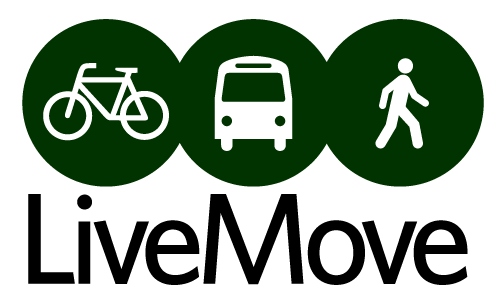Finalized in June of 2013, LiveMove’s 13th Ave. Downtown-Campus Corridor Concept Plan presents a proposal for the redesign of 13th Ave to provide for safer bicycle and pedestrian travel. Sparked by attention to dangerous conditions and a future increase in student housing, interest in promoting active transportation along the corridor inspired LiveMove’s ByDesign group to take on this project. Initial goals were to improve both safety and access for all users along this corridor.
In 2013, the upcoming Capstone student housing development was paired with significant investment in car-related infrastructure, which concerned LiveMove members who suspected that students were more likely to walk or bike to campus. Investment in parking spaces would raise the cost of housing significantly while an increase in traffic would make a widely-used corridor more dangerous for cyclists and pedestrians. LiveMove members decided to explore alternative designs and uses for this corridor that might better meet the needs of the community. The ByDesign Downtown-Campus Corridor Redesign and Plan project included a corridor study, case studies and a design charrette, and led to the proposal contained in the final report [link here].
The 13th Ave Corridor study began with an examination of the area’s current conditions. Students looked at factors like car and bicycle traffic counts, physical conditions (including lighting, signs and infrastructure), the number and use of on-street parking spaces, transit service and land use. This analysis found that current off-street parking spaces were underutilized, automobile travel was lower than estimated, and around 3,500 cyclists used the corridor daily during the fall. The students also found that a lack of cycling infrastructure along 13th Ave led cyclists to bike the wrong way along the street, increasing the risk of dangerous collisions. The team determined that to improve safety and access, the street’s design should prioritize the movement of people over cars.
LiveMove then took on an extensive visioning process and researched characteristics of cycling corridors in cities like Portland, OR, and Washington, D.C. Based on this research, students concluded that the street could be much safer through several changes to the infrastructure and use. The team’s proposal includes the development of a two-way cycle track accompanied by a traffic buffer, a reduction in on-street parking spaces, adding more signage and signals catering to bicyclists, and undertaking an educational campaign.




